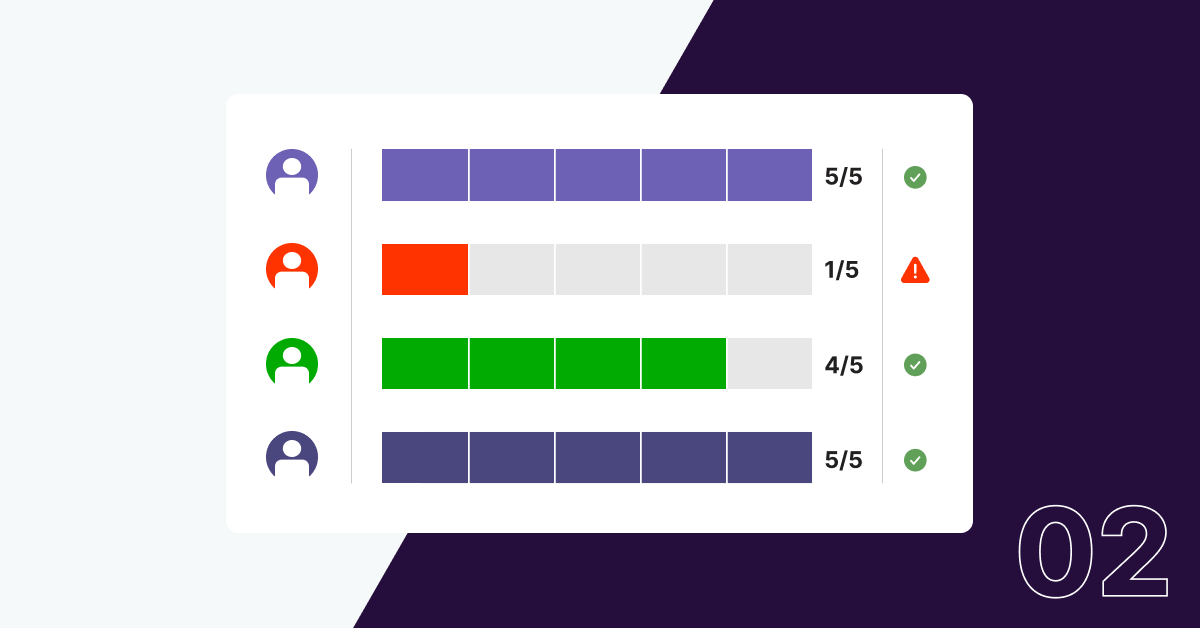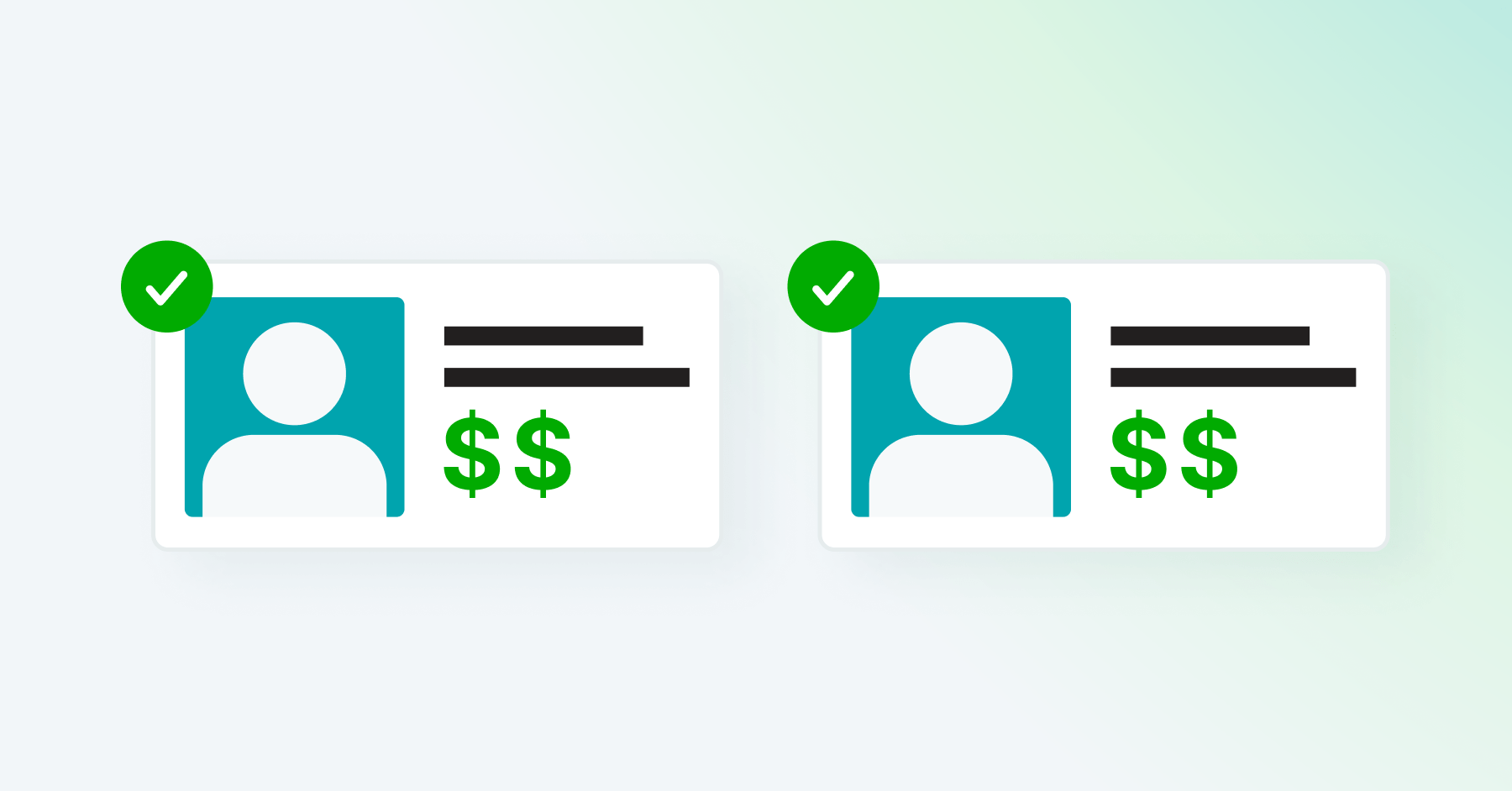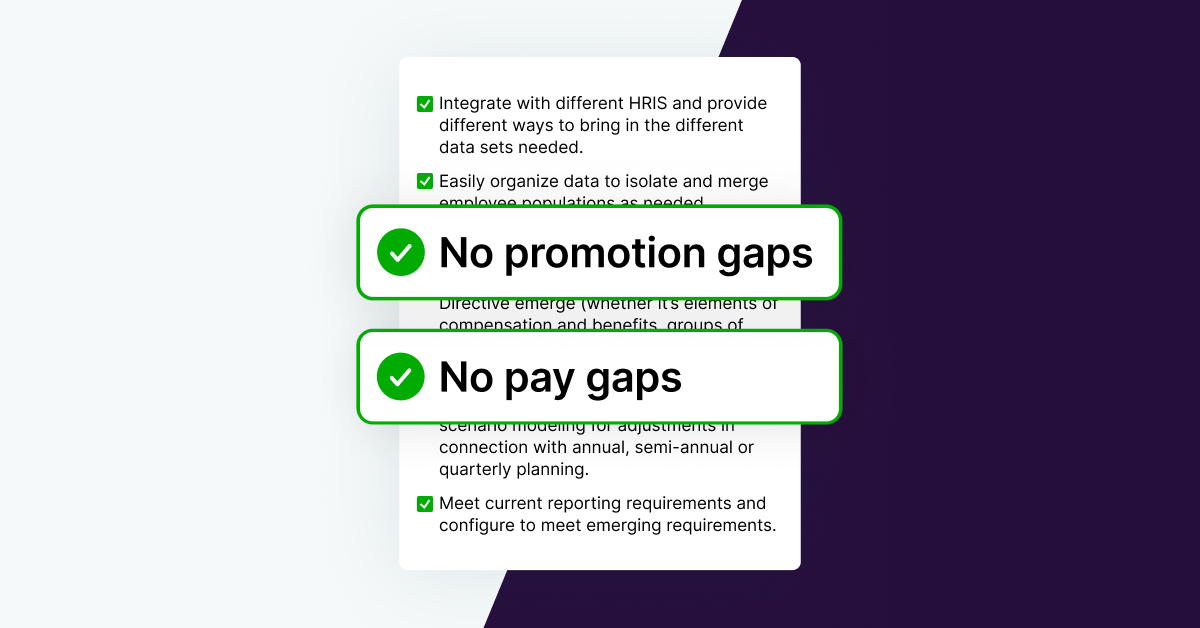Analyzing performance reviews for group-based differences is a hallmark of an effective workplace equity program. The 2024 Workplace Equity Trends Report found that organizations that effectively build diverse teams at every level are 69% more likely to analyze performance ratings for bias against particular groups. Here is Part 1 of our performance review series with best practice guidance for how to conduct a workplace equity-based analysis of your performance reviews. Often this is just where the work begins, however.
Performance ratings are about much more than the actual review window. Insights at this moment can provide advanced warning of workplace equity issues down the line, allowing you to identify and address issues early. They also reflect issues that may have created inequities before the reviews took place, like differences in sponsorship, assignment to high-profile work, or other forms of support and development.
In this post, we’ll discuss the playbook for addressing differences in performance ratings. First, it is critical to gain support from your leadership team by effectively communicating the results of your performance review analysis to them. Your action plan should mitigate downstream impacts from the differences, institute best practices to interrupt bias in the performance review process itself, and ultimately create a more supportive environment year-round for communities that have historically found less success in your workplace.
Why is it difficult to address inequities in performance?
When crafting an action plan for addressing group-based differences in performance ratings, it is helpful to contrast remediation plans for pay equity analyses. For pay inequities, the solution is much more straightforward: if one group is being paid less for similar work and those differences cannot be explained by neutral, job-related factors, you should increase the compensation of the underpaid group to reduce the size of the difference. The next-level challenge is addressing the root cause of the issue by bringing more oversight, rigor, and consistency to how pay decisions are made.
The advantage when addressing pay equity issues is that pay is continuous, so it can easily be fine-tuned to address discrepancies. We can increase the pay of all members of a particular community who are paid less than their peers, giving more to employees who are underpaid by larger amounts. The biggest challenge is sorting out the budget.
Performance ratings are different. Our 2024 Workplace Equity Trends Report found that two-thirds of organizations rank or bucket performance ratings, and the vast majority of times there are three to five buckets for these ratings. Adjusting performance reviews to address discrepancies requires a qualitative change in these assessments, which may change the message the employee’s manager intended to communicate.
Additionally, identifying which employees’ ratings to change can be time intensive — or even impossible. Suppose employees of color were twice as likely to receive negative performance evaluations than their white peers. To achieve similar rates, half of the employees of color with negative ratings would have to receive neutral or positive ones (though ratings need not be totally equal: the most pressing issues to address are where differences are both practically large and statistically significant.)
These challenges complicate an adjustment process, though it may still be helpful to try: reflection may lead managers to change the ratings of some borderline employees that they had overlooked or rated too harshly.
What can you do to address discrepancies in performance ratings?
Because of the difficulties in revising proposed performance ratings that show evidence of bias, consider the following:
- What happens as a consequence of these performance ratings?
- Ensure that your organization follows established best practices for conducting performance reviews.
- The observed difference may indicate that certain communities are not receiving the support they need to be successful in your workplace. What steps can your organization take to support these communities throughout the year, ensuring that they have the same opportunities to succeed as others?
Mitigate downstream impacts of inequitable reviews
Performance reviews can influence base pay increases, bonus payouts, stock or equity awards, promotions, and retention. In some cases, the connections between these processes can be direct, bright lines. For example, a high performance rating may mean you receive more than the target bonus, while a low rating means your bonus is reduced or not paid out at all. Sometimes, the connections are weaker or not as direct, but at the end of the day your performance review process reflects the way that your organization determines who is doing well — and who isn’t.
The first question you should ask is, what will happen as a consequence of these ratings? Will it create or exacerbate pay equity issues? If so, consider breaking or weakening the link between these ratings and compensation decisions. Alternatively, identify the issue and lean in on remediation, potentially giving somewhat larger increases to employees from the disadvantaged group who met or exceeded expectations. If you are analyzing those downstream outcomes for group-based impacts (e.g. in a pay equity analysis), consider removing performance ratings as a control as they may legitimate pay differentials but using this biased control.
In particular, consider whether there are differences at the bottom of the performance curve. Here, there are more likely to be corrective actions for the employee, which may take the form of placement on a formal performance improvement plan, or even termination. Corrective actions, like rewards decisions, should be clearly tied to explainable reasoning, and should not favor one group of employees over another. You do not want performance reviews to cascade into adverse impact in termination decisions, which can generate substantial legal risk for your organization.
The right move here depends on the type and strength of connections between performance reviews and other processes at your organization, so think through those connections carefully.
Revise your performance review process
Bias in performance reviews has long been a hot topic, and there are so many resources out there that can help you understand the types of cognitive biases, how they may impact performance appraisals, and how you can design a performance review process that reduces the impact of those biases. A few things stand out to me from this literature and from our own research.
Anti-bias training alone is not enough. While our research for the 2024 Workplace Equity Trends Report showed that organizations which effectively build diverse teams are 2.8x as likely to require anti-bias training, a long history of research in this space has long shown that required training alone can have mixed or even negative results. One review of the literature on diversity training showed that “the key to improving the effects of training is to make it part of a wider program of change.”
Add structure to performance reviews. Bias creeps into the open, squishy spaces in the performance review process. Each of the following can reduce the ambiguity of performance reviews: creating more structure in the evaluations, striving for clear and objective measures of performance, adding multiple stakeholders to the process, and having managers explicitly explain their reasoning for specific ratings.
Create an environment year-round that supports success for everyone
It may be the case that the process of assessing performance for different communities is not biased at all, meaning that managers are accurately and fairly assessing how well employees have achieved their goals over the past year. In this case, differences in performance ratings may stem from how the lived experiences of specific communities and employees differ.
One DE&I practitioner I spoke with compared navigating career development as being dropped into a maze. We may all start in the same place, but some people are given a map, snacks, and a guide while others are left to find their way alone. These differences are a form of privilege, and depend on the employee’s background and how they are socially recognized, including their race, gender, sexual orientation, class, ability, national origin, and more. Promoting equity in the workplace requires us to acknowledge that these differences exist so we can reduce their impact on outcomes.
In my work with one company, we found that performance ratings differed significantly along racial lines in parts of the organization. Part of our approach was closing the loop and reflecting the results back to business leaders. When they saw that certain communities in their organization were less likely to receive positive reviews, they were upset. Obviously, they did not want this result.
Part of their action plan was to make development plans for the year for each employee from these communities. In these cases, this individualized approach was feasible — there were 10-30 community members in each business unit. This made the intentional nurturing of talent from these communities a focus for the leadership team over the entire year, not just during the review cycle. As a result, none of the six departments where this was an issue had the same issue in future performance review cycles. In each case, performance ratings for the community that had previously had less favorable assessments were brought up to the average.
Equity in performance reviews is about more than the assessment
This quote from one survey respondent from our Trends Report sums up the holistic approach required to create an equitable environment:
“If organizations are using performance ratings to make pay decisions, the ratings will also connect to promotions, succession planning, and retention. And it may even be upstream from these issues: work assignment, who is getting strategic/high visibility work, etc. You can’t just look at one piece of it. You have to look at the full employee lifecycle at each stage and each component of what creates workplace equity.”
Analyzing performance reviews and identifying issues at that stage in the employment process is an opportunity to address and interrupt inequitable outcomes before they crystallize into more permanent changes, like promotion or termination.
Want more insights about how leaders are embedding workplace equity throughout the entire employee lifecycle? Get the full 2024 Workplace Equity Trends Report at the link below.
Did you miss the first article in our series about analyzing and addressing bias in performance reviews? Check out Performance Reviews Part 1: How to Analyze Your Performance Reviews for Bias.
The information provided herein does not, and is not intended to, constitute legal advice. All information, content, and materials are provided for general informational purposes only. The links to third-party or government websites are offered for the convenience of the reader; Syndio is not responsible for the contents on linked pages.



